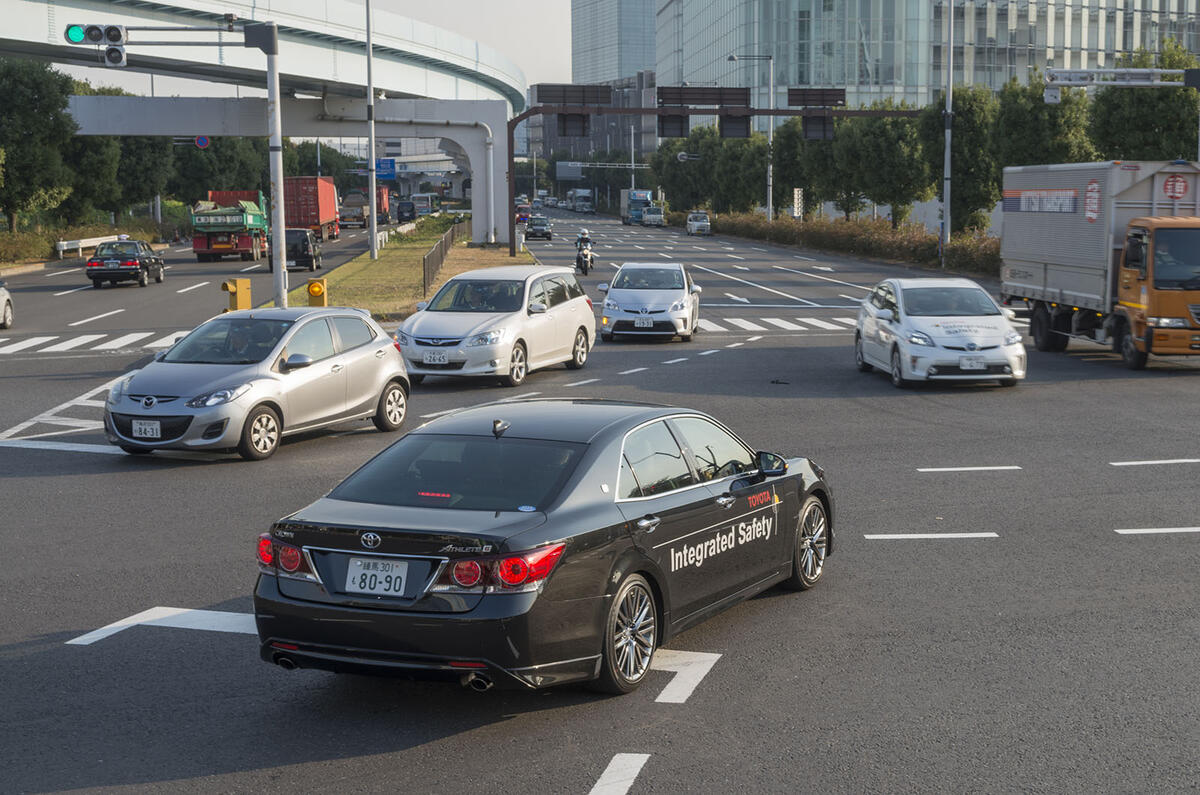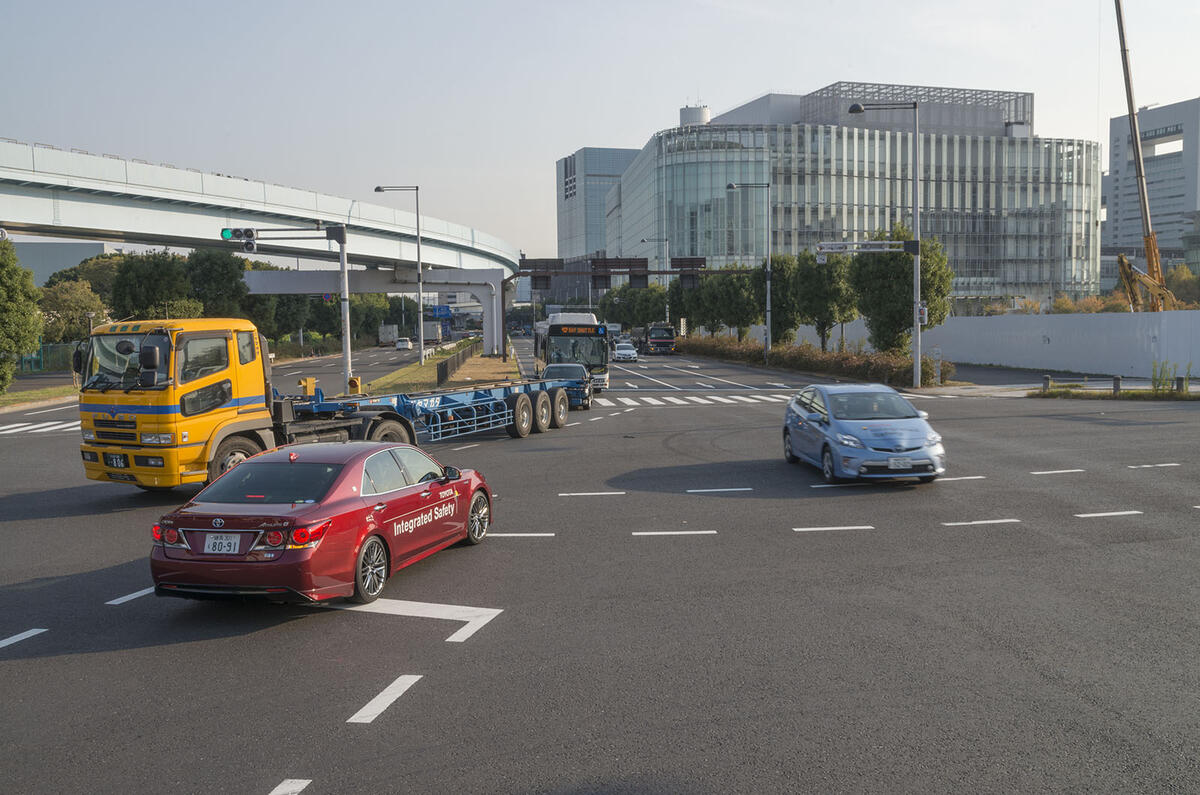Toyota has become the first manufacturer to roll out a vehicle-to-infrastructure connectivity package in its production cars.
The system can be used to mitigate accidents in instances of poor visibility – such as when vehicles are turning across oncoming traffic at busy junctions – by alerting the driver to hazards that aren’t picked up by the car’s onboard sensors.
The manufacturer is offering the Intelligent Transportation System (ITS) Connect as a cost option on three models in its domestic Japanese range.
The system uses vehicle-to-vehicle (V2V) and vehicle-to-infrastructure (V2I) communication over a dedicated radio frequency of 760MHz, set aside by the government for ITS.
When a vehicle equipped with ITS Connect comes within the 100-metre range of a transmitter mounted at a traffic-light-controlled junction, a symbol on the instrument panel display informs the driver that the car is receiving data.
It can provide a right-turn collision caution, where an audio and visual alert appears if the driver starts to pull across an oncoming vehicle, or if he starts to turn when a pedestrian is crossing the road.
It can also warn the driver of a red traffic light if he approaches it without easing off the accelerator, and give a countdown until the light changes to green.
ITS Connect also makes car-to-car communication possible. Two vehicles equipped with the transmitters can use communicating radar cruise control to minimise speed fluctuations much more precisely than with standard radar cruise, improving traffic flow.
It is early days for the system - at present just 20 junctions in Tokyo are equipped with transmitters to send information to the cars carrying the device - although this number will rise to nearly 50 by next March.
However, Toyota hopes it will eventually become widespread enough to help improve road safety; in Japan, 45 per cent of road traffic accident fatalities occur on or near busy junctions and crossings.
ITS Connect is available for around 25,000 Yen, the equivalent of £134. Toyota plans to offer it on mainstream models such as the Toyota Prius at a later date.
Toyota has been developing ITS-compatible interfaces in collaboration with companies and organisations in both the public and private sectors in Japan to rapidly expand the number of vehicles and devices equipped with the technology.






















Add your comment